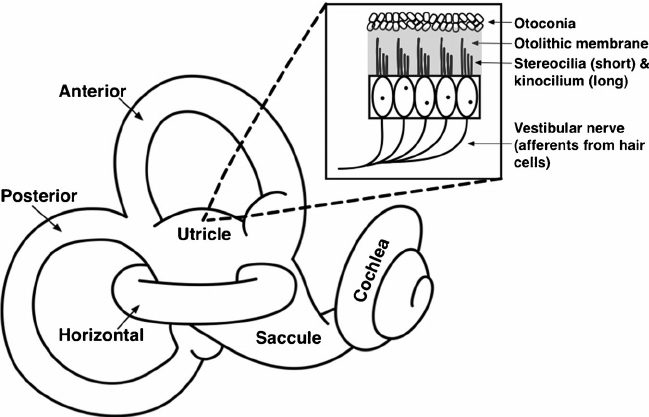BPPV (Benign Paroxysmal Positional Vertigo) is the most common cause of vertigo, or dizziness. The sensation of vertigo is brought on due to a problem in the inner ear – namely, there is a mismatch of signals from the vestibular apparatus that lies in each ear, and the brain, which results in a false sensation of spinning or dizziness.
It is characterised by:-
- a moderate-severe spinning sensation
- nystagmus (uncontrollable flicking of the eyes),
- nausea
- loss of balance.
The vertigo is usually of short duration (<60 secs) and related to a sudden change of position.
What positions can trigger vertigo?
- Rolling over in bed
- Looking up
- Getting up from lying on your back
- Leaning forward
What causes a mismatch of signals from the inner ear to the brain?
Otoconia are calcium crystals which lie within the labyrinth of the inner ear. In people with BPPV, these otoconia are dislodged from their normal position and migrate to one of the 3 semicircular canals (posterior canal in 90% of cases; horizontal canal in 5-15% of cases and anterior canal in 1-2% of cases).

When a person with BPPV moves their head, these free-floating otoconia displace fluid within the inner ear, which in turn triggers hair cells to send a signal to the brain that rotational movement is occurring. The unaffected ear will not be sending these same signals because there are no loose otoconia present. This mismatch of signals causes the sensation of vertigo.
What causes BPPV?
- Head injury is the most common cause
- Ear surgery
- Prolonged positioning on your back, such as dental work
- Degeneration of the vestibular system in the inner ear, caused by age
How is BPPV diagnosed?
- Patient history with your GP, physiotherapist, or ENT specialist.
- Positional tests (which test depends on which semicircular canal is affected).
- Dix-Hallpike Test (is the most common test performed, used for the posterior canal)
- With patient in long sitting the physiotherapist turns the patients head to 45 degrees, towards the affected ear
- Patient is then quickly taken from seated to supine position with the neck extended 30 degrees over the end of the bed. The position is held for up to 30 secs and is positive if the physiotherapist observes nystagmus and vertigo symptoms are reproduced.
- Horizontal Roll Test (horizontal canal)
- Patient lies supine. The physiotherapist flexes the neck to 20-30 degrees
- Patients head is quickly rotated 45 degrees and held in that position for 30 seconds. Head is returned to midline and repeated in the opposite direction. A positive test reproduces nystagmus and vertigo. Both sides may test positive, but the side which reproduces the most intense symptoms is determined to be the affected side.
What is the treatment for BPPV?
Treatment consists of a series of manoeuvres, performed by a physiotherapist, which aim to move the otoconia out of the semicircular canals. The manoeuvre performed will depend on which semicircular canal is affected.
For the posterior canal the most common treatment technique is the Epley Manouvre.
For the horizontal canal the most common treatment technique is the Lempert Manouvre.
Following treatment…….
- Do not drive home following these manoeuvres
- Avoid lying flat for 2 nights afterwards
- Sleep on good side with pillow behind back to act as a barrier to rolling over
- Avoid bending over
These treatments have an 80% success rate and can give immediate relief, as opposed to the wait it out approach, which can take take up to 12 weeks.
Your physiotherapist may also prescribe habituation exercises, that you can do at home to treat any residual effects of BPPV.
